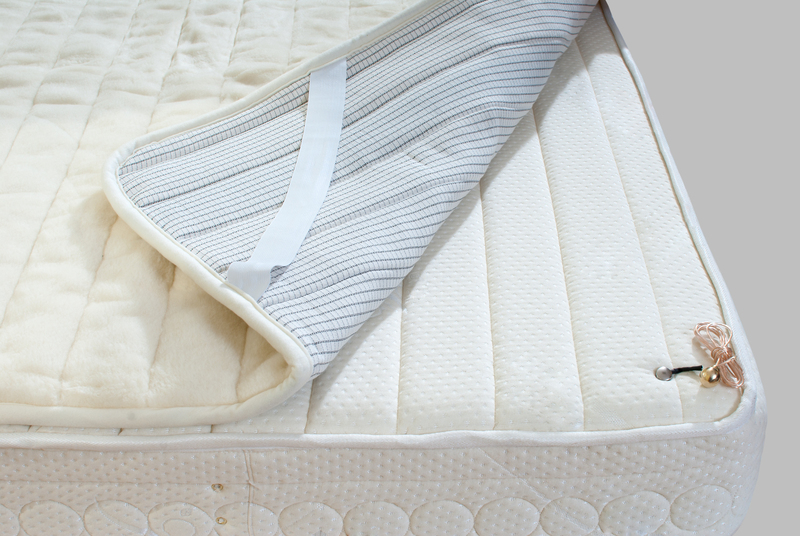Keep Window Sills Mould-Free with These Tips
Posted on 07/06/2025
Keep Window Sills Mould-Free with These Tips
Window sills are vulnerable to mould growth due to dampness, condensation, and poor ventilation. Mould not only ruins the appearance of your home but can also compromise indoor air quality and wellbeing. Fortunately, maintaining mould-free window sills is achievable with a proactive approach and simple maintenance tips. In this comprehensive article, you'll discover the best strategies and advice on preventing mould on window sills so your home stays healthy and fresh throughout the year.

Understanding Mould Growth on Window Sills
Before diving into prevention and solutions, it's essential to understand why mould forms on window sills. Mould is a type of fungus that thrives in moist environments. The causes of mould on window sills largely stem from water condensation, leaky windows, and insufficient air circulation. If unchecked, even a minor mould issue can quickly escalate into a large-scale problem, affecting both the structural integrity of your home and your family's health.
- Frequent rain or high humidity increases the risk.
- Poorly insulated windows promote condensation.
- Neglected cleaning can allow spores to settle and spread.
- Lack of adequate ventilation exacerbates moisture retention.
Why You Should Prioritize Keeping Window Sills Mould-Free
Many underestimate the importance of keeping window sills mould-free. Mould isn't just unsightly--it poses significant risks:
- Health Hazards: Mould spores can irritate allergies, trigger asthma, and cause respiratory problems.
- Structural Damage: Prolonged mould exposure can deteriorate wooden window sills and frames.
- Loss of Home Value: Homes with evident mould issues may suffer from lower market value and deter potential buyers.
- Increased Maintenance Costs: Unchecked mould often leads to expensive repairs or window replacements.
What Causes Mould on Window Sills?
Common Reasons Why Window Sills Attract Mould
- Excess Moisture: Moisture can accumulate from leaks, rain, or condensation on cold glass.
- Poor Sealing: Old or cracked window seals allow water intrusion.
- Lack of Sunlight: Dark corners encourage mould growth, as fungi thrive away from direct sunlight.
- Improper Cleaning: Neglecting to clean dust and debris creates a welcoming environment for mould spores.
Top Tips for Keeping Your Window Sills Mould-Free
1. Improve Ventilation
One of the most effective ways to prevent window sill mould is to promote good airflow throughout the room. Open windows regularly, especially after cooking, showering, or drying clothes indoors. If natural ventilation is limited, invest in extractor fans or dehumidifiers to keep humidity under control. Consistent air circulation prevents condensation and keeps moisture from settling on window sills.
2. Regular Cleaning Routine
A simple yet essential tip for mould-free window sills is regular cleaning. Dust and debris can trap moisture, creating ideal conditions for mould colonies. Wipe down your window sills weekly with a damp cloth and a gentle cleaning solution. For wooden window sills, avoid excessive moisture that could seep in and cause damage.
- Use vinegar or a non-toxic mould cleaner for deep cleaning.
- Pay special attention to corners and crevices where mould likes to hide.
- Dry the surface thoroughly after cleaning to remove lingering moisture.
3. Seal Windows Properly
Faulty window seals are a prime source of unwanted window sill moisture. Inspect seals annually and repair any cracks or gaps using weatherproof caulk or sealant. Properly sealed windows not only prevent water intrusion but also improve energy efficiency and reduce your heating and cooling costs.
4. Address Leaks Immediately
If you notice water stains, peeling paint, or dampness around your window sills, act quickly. Localize the source of the leak--whether it's from a cracked pane, gutter overflow, or faulty flashing--then repair it promptly. The longer water is allowed to stagnate, the more difficult it becomes to eliminate mould from window sills.
5. Use Mould-Resistant Products
When renovating or repairing windows, consider mould-resistant materials for window sills and trim. There are paints, caulks, and even pre-treated timber products designed to repel fungal growth. Investing in mould-inhibiting options at the outset can make future maintenance much easier and more effective.
6. Monitor Indoor Humidity
Mould flourishes in environments with humidity above 60%. Use a hygrometer to monitor indoor moisture levels and aim to keep them between 30-50%. If humidity is a persistent issue, especially during damp seasons, a dehumidifier can be invaluable for long-term mould prevention.
7. Upgrade Your Windows
Older, single-pane windows are more likely to experience condensation issues. Modern, double or triple-glazed windows offer increased insulation, reducing cold surfaces and minimizing moisture buildup. If possible, upgrading your windows provides long-term protection against mouldy window sills.
How to Remove Mould from Window Sills Effectively
If you already have mould on your window sills, immediate action is key. Here's a detailed, step-by-step guide to remove it safely:
- Wear protective gloves, a mask, and goggles to avoid direct contact with mould spores.
- Mix a cleaning solution of one part white vinegar to one part water, or use a commercially available mould remover.
- Apply the solution to the affected area generously.
- Allow it to sit for at least 10-15 minutes to kill mould at the root.
- Scrub gently with a soft-bristle brush or non-abrasive sponge.
- Wipe clean with a damp cloth; repeat if necessary.
- Dry the window sill thoroughly to prevent further growth.
- Dispose of cleaning materials responsibly to avoid spreading spores.
- Monitor the area over the next few weeks for new growth.
For severe or recurring mould problems, consult a professional mould remediation specialist.
Preventing Mould on Window Sills in Different Weather Conditions
During Humid Summers
- Use air conditioners or dehumidifiers to reduce indoor moisture.
- Keep windows slightly open (where safe) for cross-ventilation.
- Wipe away condensation every morning.
During Cold Winters
- Keep curtains open during the daytime to allow sunlight to warm the space.
- Ensure that windows are properly insulated to prevent drafts and condensation.
- Regularly check for ice buildup which may melt and create water issues.
Natural Solutions for Mould Prevention on Window Sills
Prefer natural, chemical-free mould prevention? Consider these environmentally friendly techniques:
- Baking soda: Sprinkle a small amount along window sills to absorb moisture and inhibit fungal growth.
- Essential oils: Tea tree and clove oil have natural anti-fungal properties--add a few drops to your cleaning water.
- Sunlight: Open curtains and blinds to let UV rays kill spores naturally.
- Salt: Place bowls of rock salt near windows to absorb airborne moisture.
When to Call a Professional for Window Sill Mould Removal
Some mould infestations may be too severe or widespread for DIY solutions. If you notice:
- Black mould (Stachybotrys chartarum) which can be toxic.
- Mould returning soon after removal.
- Signs of water damage beyond the window sills, such as in walls or floors.
- Strong, persistent musty odors.
...it's time to consult a professional mould remediation service. They can assess the full extent of the problem, treat affected areas safely, and advise you on long-term strategies to keep window sills mould-free.

Frequently Asked Questions (FAQs)
What are the first signs of mould on window sills?
The earliest signs include black, green, or white spots, a musty odor, peeling paint, and dampness. Act immediately if you spot these indicators.
Are some materials more resistant to window sill mould?
Yes, materials such as PVC, certain composite woods, and specially treated timber are more resistant to moisture and mould. For retrofits, consider using these for longer-lasting, mould-free window sills.
How often should I clean window sills to prevent mould?
Clean at least once a week, but frequency may increase in damp or humid conditions. Regular cleaning is a cornerstone of effective mould prevention.
Conclusion: A Mould-Free Future for Your Window Sills
Keeping window sills mould-free is crucial for a healthy, attractive, and low-maintenance home. By following the tips outlined above--improving ventilation, maintaining a cleaning routine, repairing leaks swiftly, and employing both natural and commercial mould-fighting solutions--you can safeguard your home against mould damage. Regular vigilance, paired with smart home upgrades, ensures your window sills remain pristine and your living space comfortable.
For more advice and guidance, continue to explore our articles on home maintenance and indoor air quality. Keep your windows--and your home--bright, fresh, and mould-free all year round!





